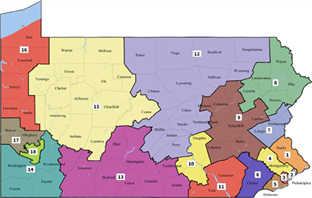Category: Elections
-

League of Women Voters v. Commonwealth: The “Free and Equal Elections” Clause Prohibits Gerrymandering
Written by
on
EDIT: The map has been released as promised by the Court, along with a brief opinion on February 19, re-outlining the views of the Court. We have included it here…
-
Green Party v. Department of State Bureau of Commission, Elections and Legislation: A long name for a nothing-burger
Written by
on
The Supreme Court of Pennsylvania rules that filing late for a special election cannot be excused. 25 P.S. § 2779 requires that a political party putting forth a candidate for…
-
Cortes v. Sprague: Ambiguous Ballot Question Splits the Court
Written by
on
Sprague v. Cortes lined up some of the most notable names in Pennsylvania law against the Secretary of State over a question fundamental to the current and future composition of…
